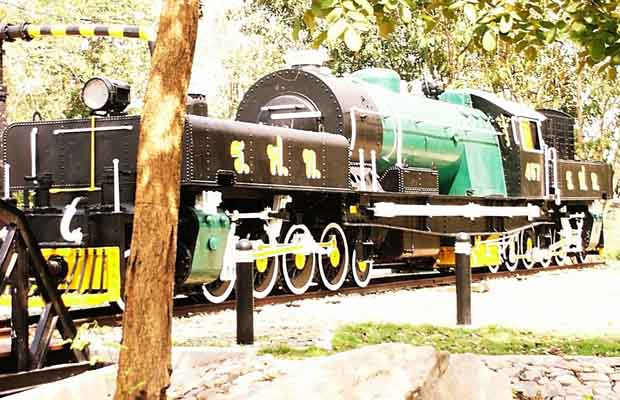
Thailand
This page was quickly created from an ancient web site after the host went into liquidation
Thai Railways
Steam locomotives
Pictures taken in February 2003.
Below: 2-8-2+2-8-2 garratt 457 is displayed adjacent to a car park opposite the allies war cemetary in Kanchanaburi.

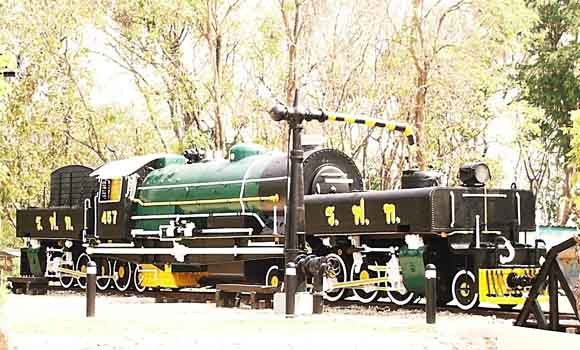
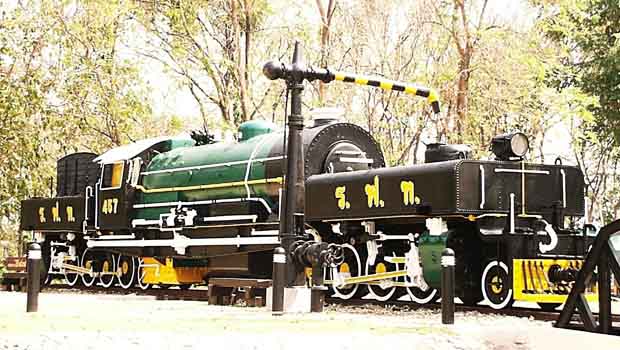
Below: 4-6-2 804, formerly Malayan Railways P class, later 521 class, is displayed between the River Kwae bridge and station.
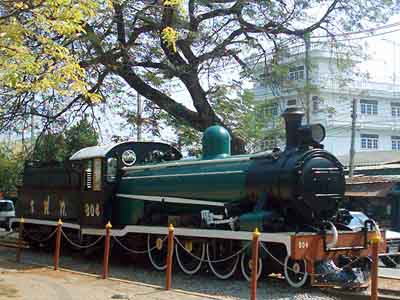
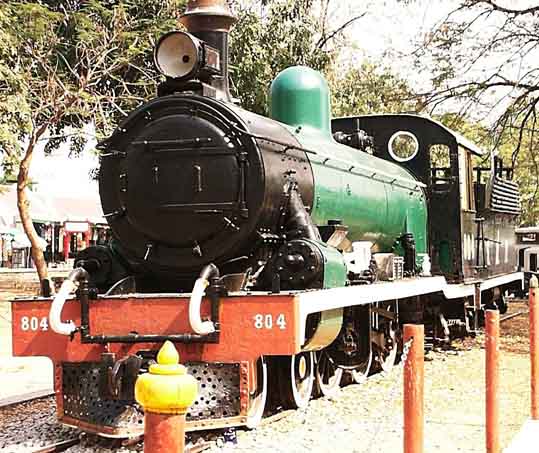
Below: 2-6-0 719, formerly JNR C56.23, is also on display between the River Kwae bridge and station.
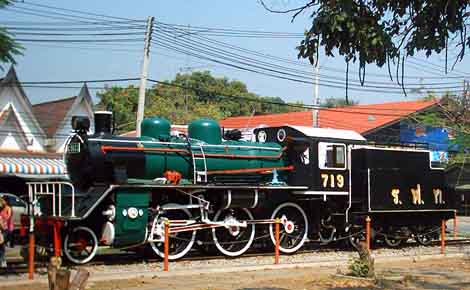
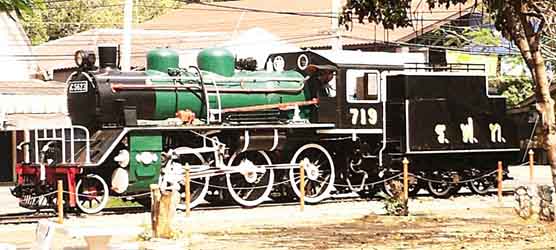
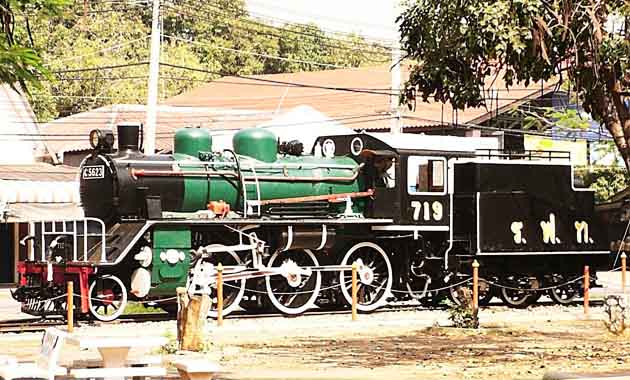
4-6-2 278 is stored behind the works wall at the west end of Makkasan station. 2 other locos were partially visible, one was 65 and the other unidentified.
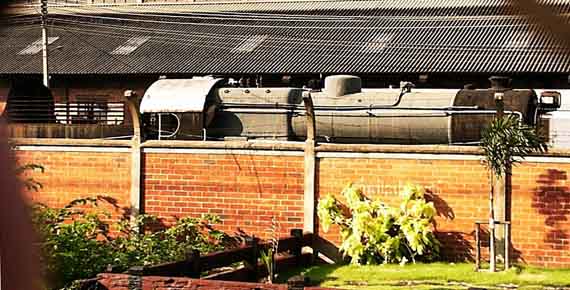
The Bridge over the River Kwai
A brief geographical history. There are in fact three rivers, the western Kwae Noi River and eastern Kwae Yai River join at Kanchanaburi to become the Maeklong River which flows into the Gulf of Thailand. The bridge over the River Kwai actually crosses the Kwae Yai River just north of this confluence, about 2 miles north of the centre of Kanchanaburi. The railway runs close to the eastern bank of the Kwae Noi River after crossing the bridge on its way to Burma. It is now only open as far as Nam Tok, about 35 miles north west of Kanchanaburi. The actual bridge had about a dozen arched girder spans on concrete piers. Two of the centre spans were destroyed in the bombing in 1944 and after the war they were replaced with the present angular sections. The land in this area is relatively flat with the occasional limestone outcrops. A lot of sugar cane is now growing in the area. As the line approaches Nam Tok it becomes quite hilly/rocky and it is here that the wooden trestle bridges are encountered. They are not built across the river but along the eastern bank where the limestone outcrops come right to the river's edge. As the train crosses these original trestle bridges at walking pace there is a sheer rock face with caves on one side and the river on the other side.
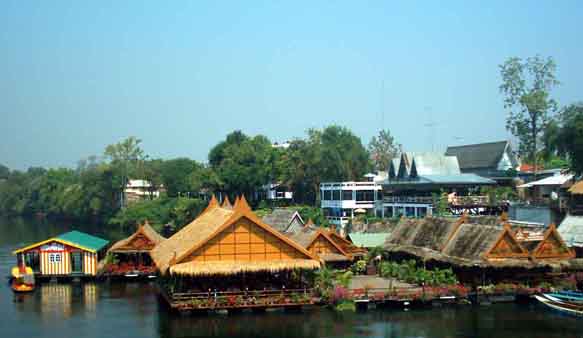
The Siam - Burma Railway
The first picture shows the River Kwae Yai bridge shortly after the 1944 bombing which destroyed the 4th and 5th spans (counting from the east). The second picture shows the bridge in February 2003 along with one of the unexploded bombs. The replacement angular spans can be seen in the background. As is usual in Asia the railways are used as public footpaths between the trains and in this case a large number of tourists also walk across the bridge. We crossed in a train a few minutes after this picture was taken. The far bank to the left of the bomb was the site of the prison camp.
Below is a view of the area of the prison camp as seen from the train. Many of the items found in this area have been transferred to one of the nearby war museums.
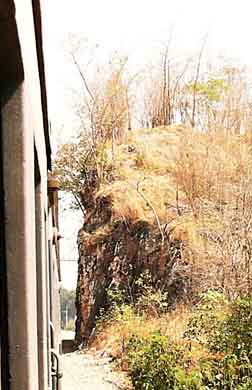
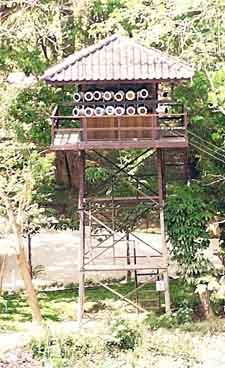
Above left: One of the rocky outcrops which were cut through by hand to lay the railway. Above right: this appears to be a replica of one of the original watch towers. Below: another war museum on the site of an old prison camp near Thakilen.
Below: The remaining views show two of the wooden trestle bridges at Tham Krasae, much of which is still original although the concrete piers have been added and/or strengthened since the war. Trains still have to cross these bridges at walking pace.
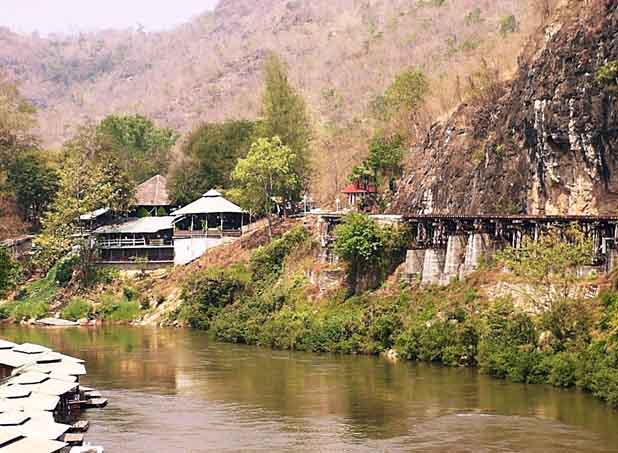
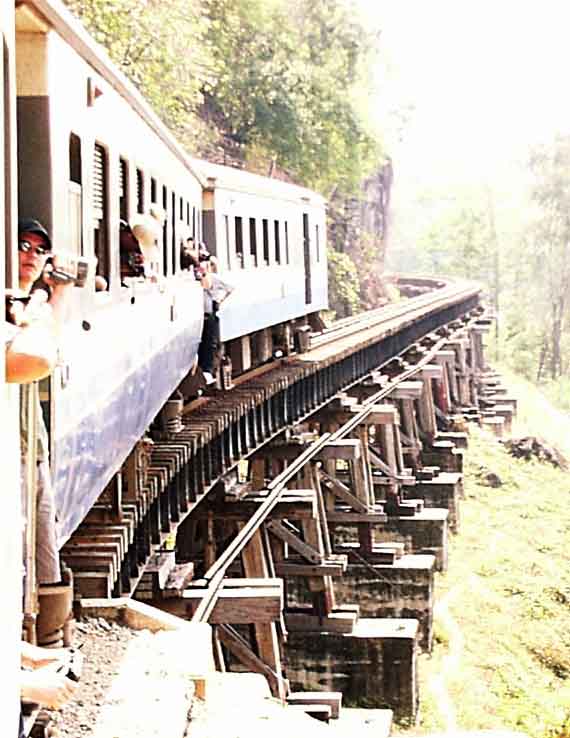
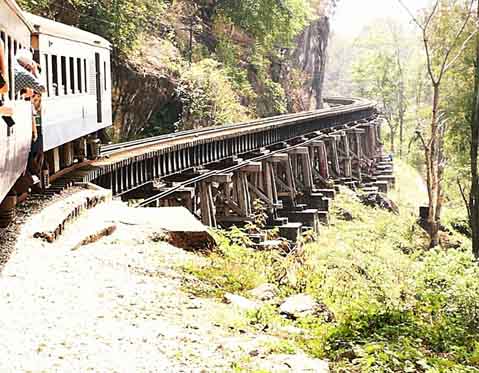
The "death railway" from Kanchanaburi to Thamkrasae,
and Makkasan station and works.
Pictures taken in February 2003.
4204 approaches Kanchanaburi with the morning train from Bangkok to the River Kwae branch.
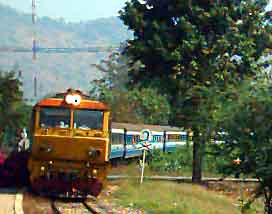
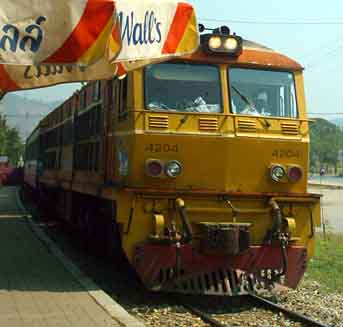
The view across the River Kwae bridge from the western end.
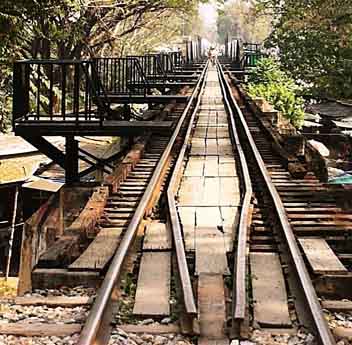
A number of these trolleys were seen at wayside stations on the River Kwae line.
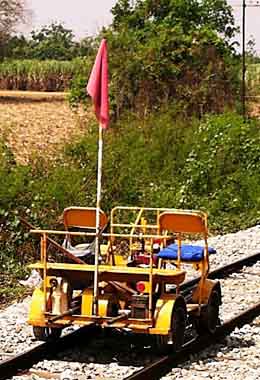
2 views from the train as 4204 heads north-west from Kanchanaburi.
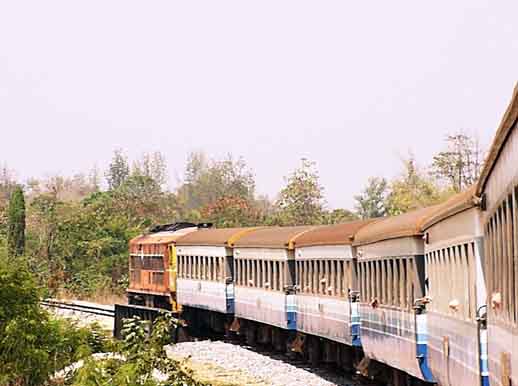
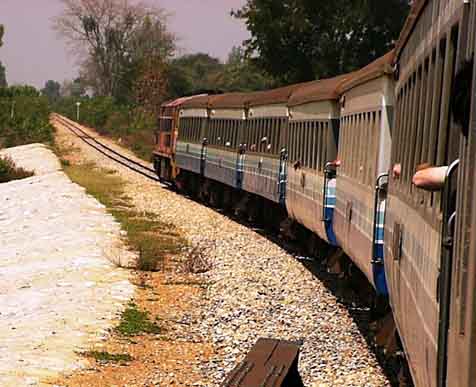
The following pictures were taken at Makkasan station and works.
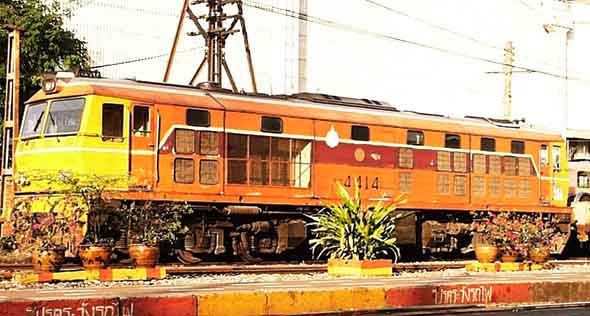


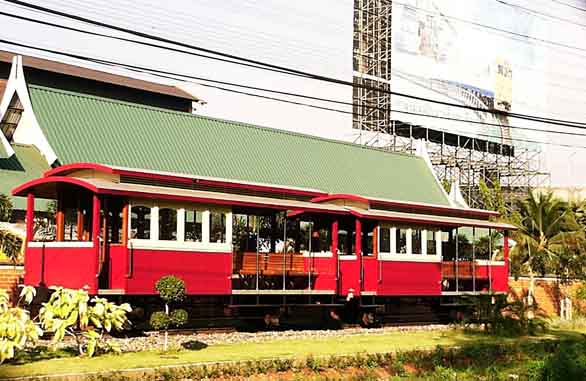
x
Created 4th August 2020.
Updated
4th August 2020.
You are visitor number
to
this page.